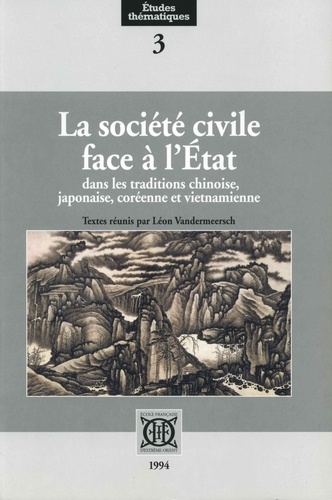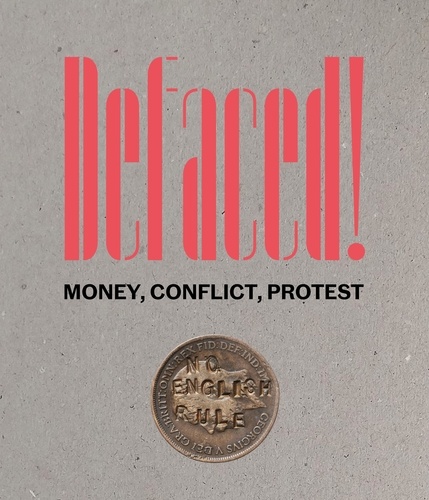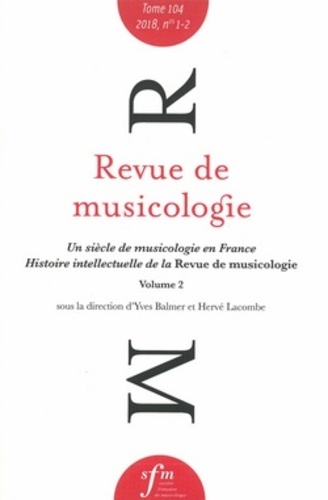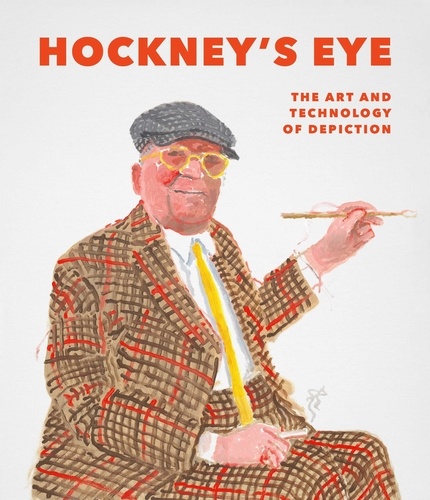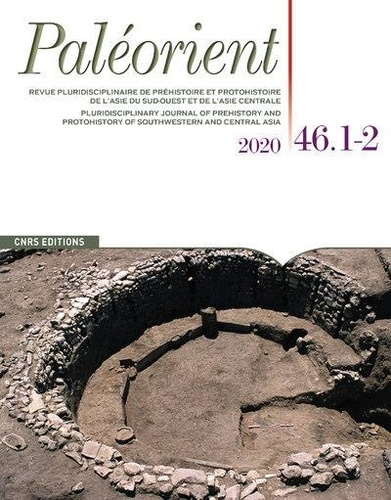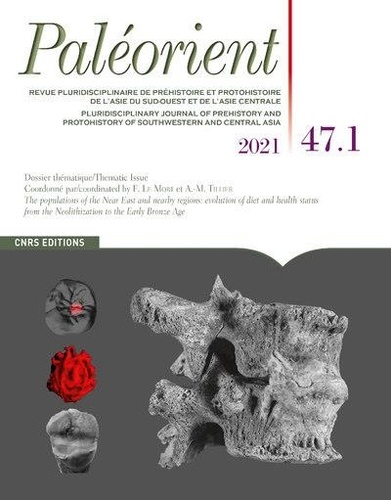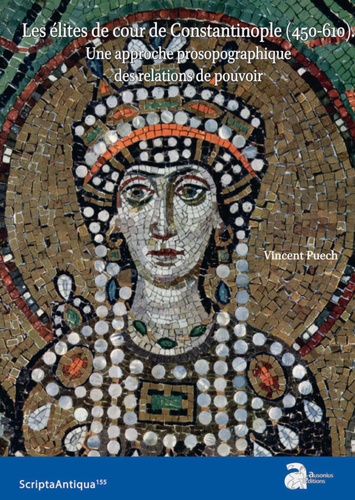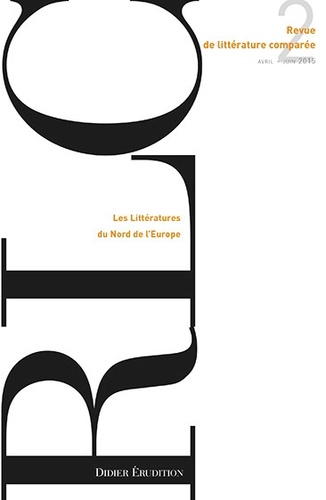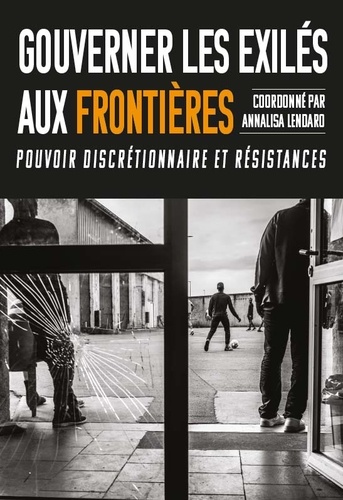Gouverner les exilés aux frontières. Pouvoir discrétionnaire et résistances
Coordinatrice de l'ouvrage : Annalisa Lendaro, sociologue, chargée de recherches au CNRS (Certop) ; E-mail : annalisa.lendaro@univ-tlse2.fr Titre de l'ouvrage : Gouverner les exilé.e.s aux frontières. Pouvoir discrétionnaire, résistances, controverses Calais, frontière franco-britannique, octobre 2016 ©. Présentation et argumentaire La frontière contemporaine tue, blesse, enferme, et éloigne une partie des candidat.e.s à la migration. Qu'elle soit maritime, terrestre, ou alpine, elle est un outil déstiné à trier les personnes migrantes selon leur (in)désirabilité. La condition d'indérisable, en dépit de critères juridiques inscrits dans le droit national et international, est le produit de pratiques discrétionnaires d'agents de police, de fonctionnaires préfectoraux, et autres " faiseurs de frontières ". De ce fait, la frontière contemporaine est à la fois un territoire, et un dispositif de gouvernement des populations, où l'effectivité des droits fondamentaux (à une vie digne, à l'éducation, à la justice, à la santé, etc.) est quotidiennement mise à mal. Sur la base d'enquêtes qualitatives menées à trois frontières françaises (la frontière franco- britannique, la frontière franco-italienne, et la frontière basque) dans le cadre d'un projet financé par l'ANR (DisPow 2019-2022), cet ouvrage collectif se propose d'apporter un éclairage résolument pluridisciplinaire (sociologie, géographie, philosophie, droit, science politique) sur les différentes facettes du gouvernement des exilé.e.s en France et sur ses effets socio-politiques. Pour cela, il s'intéressera tout d'abord à la densité des normes et consignes, parfois contradictoires, qui régissent les territoires frontaliers (partie I), puis aux marges de manoeuvre, dilemmes moraux, et contraintes organisationnelles de groupes d'acteurs qui disposent d'un pouvoir décisionnaire sur ces mêmes territoires (policiers, cheminots...) (partie II). L'ouvrage entend enfin éclairer les formes de contestation et de résistance à ce pouvoir discrétionnaire (III), considéré par certains acteurs et groupes comme étant proche de l'arbitraire et de l'abus : avec quelles attentes, de quelles façons, et avec quels résultats l'arme du droit peut-elle être mobilisée par les bénévoles pro-migrants et par les exilé.e.s eux-mêmes contre l'Etat ou les pouvoirs locaux ? Comment les associations et les collectifs, mais aussi les professionnels du droit tels que les avocat.e.s, tentent-iels de sensibiliser, d'alerter, de contester les décisions ou d'obtenir justice au nom des exilé.e.s, et pourquoi certains " cas judiciaires " deviennent emblématiques et font débat dans l'espace public à un moment donné (et d'autres non)? En cela, les contributions de l'ouvrage fournissent des pistes pour analyser les controverses socio-juridiques en lien avec le gouvernement des exilé.e.s, et pour comprendre leurs origines, les différentes conceptions de la justice qu'elles symbolisent, la façon dont elles questionnent les politiques migratoires contemporaines et les principes qui les sous-tendent et justifient. La problématique et l'originalité du projet D'un point de vue juridique, le pouvoir discrétionnaire relève d'une action entreprise à l'appréciation d'une administration et/ou d'un agent public, sans que sa conduite ou décision ne lui soit dictée clairement ou de manière univoque par le droit (Spire 2008, Dubois 2009). En principe, ce pouvoir est donc exercé par les détenteur·rice·s d'une autorité publique (centrale ou décentralisée, de maintien de l'ordre ou administrative) et se manifeste par leur liberté d'action lorsque les décisions qu'iels ont à prendre ne sont pas encadrées de façon stricte par des règles de droit et/ou des procédures détaillées (Van der Woude et Van der Leun 2017). Cette " compétence discrétionnaire " est alors accordée par la loi aux agents de l'Etat, tels que les fonctionnaires administratif·ve·s (Laurens 2008, Miaz 2019). Elle permet, du moins en théorie, de distinguer " pouvoir discrétionnaire " et " mesures arbitraires ", les dernières renvoyant à des pratiques abusives car prises manifestement en décalage par rapport aux textes juridiques, aux procédures, ou aux compétences attribuées aux agents concernés (Chauvet cit.). Néanmoins, les textes peuvent se prêter à des interprétations tellement différentes (ou rentrer en conflit entre eux) que la frontière entre discrétionnaire et arbitraire est parfois difficile à tracer (Fassin 2014, Campbell 1999, Laurens cit.). Aussi, il serait réducteur de concevoir ce pouvoir comme uniquement le fait d'acteurs publics : dans le cadre du projet DisPow, auquel ont participé les auteur.e.s de cet ouvrage, les enquêtes menées ont exploré les multiples facettes du pouvoir discrétionnaire en pratique(s) en se focalisant à la fois sur des territoires spécifiques, les frontières, et sur un champ juridique particulier, le droit des étranger·e·s ; en effet, ces deux focales permettent de montrer à quel point l'imprécision des critères législatifs ou règlementaires laisse la possibilité - ou impose la responsabilité - aux acteurs publics mais aussi privés de choisir comment interpréter les règles ou consignes et donc comment agir face à une situation concrète, avec comme conséquences principales, d'une part, des pratiques très disparates selon le territoire, l'organisation du service, les enjeux réputationnels au sein du groupe, etc., et d'autre part, un accès des étranger·e·s à leurs droits très aléatoire. Ainsi, nous avons étudié les formes et les effets d'un pouvoir discrétionnaire qui désigne la sphère d'autonomie à l'intérieur de laquelle les agents de l'administration (Spire 2008, Dubois 2009), mais aussi les " faiseurs de frontière " (transporteurs, contrôleurs, agents de sécurité etc.) (Guenebeaud 2019) et les accompagnant·e·s (juristes bénévoles, avocat·e·s, activistes) (Lendaro 2021) peuvent prendre différentes décisions au sujet des personnes en situation de migration, et ce, pas forcément en l'absence d'une règle mais plus souvent en présence d'une multiplicité d'injonctions ou de suggestions dont le degré de contrainte varie (Parrot 2019). L'ambition de cet ouvrage est de contribuer à la compréhension des origines socio-juridiques, morales, et organisationnelles, et des effets sociaux et politiques, de cette porosité entre discrétionnaire et arbitraire aux frontières. Son originalité est de vouloir le faire à la lumière, d'une part, des pratiques des acteurs aux prises avec la mise en oeuvre des politiques migratoires en France, et d'autre part, des actions et stratégies entreprises par les individus et groupes qui essayent de les contester, de déjouer leurs contraintes, de dénoncer leurs effets, voire d'attaquer en justice les responsables de violences et/ou violations de droits. L'ensemble des contributions partent du principe que le droit, loin de constituer une matière figée dont l'application serait homogène et capable d'orienter dans un seul et même sens les pratiques individuelles et collectives, est d'une part le produit de phénomènes sociaux et de rapports de forces en évolution, et d'autre part, contribue évidemment aussi à cette même évolution des rapports sociaux (Calavita 2016, Ewick et Silbey 1998, Bourdieu 1990). Pensées pour se faire écho et s'articuler à la problématique générale de l'ouvrage, les contributions se proposent de répondre aux questions suivantes : quelles sont les manifestations de ce pouvoir discrétionnaire aux frontières et que nous disent-elles de phénomènes sociaux plus globaux tels que l'évolution des inégalités entre groupes sociaux, l'effectivité des libertés publiques, ou encore la place du droit dans les mouvements sociaux ? En quoi les formes et les effets du pouvoir discrétionnaire en pratique(s) nous renseignent-ils sur les rapports au droit et à la légalité des acteur·rice·s qui l'exercent (Ewick et Silbey 1998, Pélisse 2005) ? Quels apprentissages du politique (Soss 1999) apparaissent via la rencontre avec le droit et ses marges d'interprétation ? Quels sont les dilemmes moraux auxquels sont confrontés les acteur·rice·s pouvant exercer un certain pouvoir discrétionnaire (Fassin et Eideliman 2012)? Quels usages stratégiques et/ou militants du droit sont mis en oeuvre en réaction à l'exercice d'un pouvoir discrétionnaire considéré comme arbitraire et donc injuste (Israël 2009, Lendaro 2021)? Quelles luttes sont davantage investies par la judiciarisation (Commaille 2008) et à quelles conditions le droit peut-il être considéré par les acteur·rice·s comme un outil de changement social (McCann 2006, Galanter 1974) ? Bibliographie Bourdieu, P. (1990) " Droit et passe-droit. Le champ des pouvoirs territoriaux et la mise en oeuvre des règlements ", Actes de la Recherche en Sciences Sociales, 81-82 86-96. Calavita, K. (2016) Invitation to Law and society. An introduction to the study of real Law. Chicago University Press. Campbell, E. (1999) " Towards a sociological Theory of discretion ", International Journal of the Sociology of Law 27, PP 79-101. Chauvet, C. (2009) " Arbitraire et discrétionnaire en droit administratif ", Gilles J. Guglielmi éd., La faveur et le droit. Paris cedex 14, Presses Universitaires de France, p. 335-355. Commaille, J. (2008). 13. La judiciarisation : nouveau régime de régulation politique. Dans : Olivier Giraud éd., Politiques publiques et démocratie (pp. 305-319). Paris : La Découverte. Dubois, V. (2009), Le paradoxe du contrôleur. Incertitude et contrainte institutionnelle dans le contrôle des assistés sociaux, Actes de la Recherche en Sciences Sociales, 178, 28-49. Ewick P., Silbey S. (1998) The Common Place of Law. Stories from Everyday Life, Chicago and London, The University of Chicago Press. Fassin D. (2014) " Pouvoir discrétionnaire et politiques sécuritaires. Le chèque en gris de l'Etat à la police ", Actes de la recherche en sciences sociales, 201-202(1) 72-86. Fassin, D. & Eideliman, J. (2012). Economies morales contemporaines. Paris : La Découverte. Galanter, M. (1974). Why the ? Haves' Come out Ahead : Speculations on the Limits of Legal Change. Law and society review, 9(1), 95-160. Guenebeaud, C. (2019), "Nous ne sommes pas des passeurs de migrants" : le rôle des transporteurs routiers et maritimes dans la mise en oeuvre des contrôles à la frontière franco-britannique. Lien social et Politiques, 83, 103-122. Israël, L. (2009). L'arme du droit. Presses de SciencesPo. Laurens S. (2008) " Les agents de l'Etat face à leur propre pouvoir. Eléments pour une micro-analyse des mots griffonnés en marge des décisions officielles ", Genèses, 72(3) 26-41. Lendaro, A. (2021). Défendre les " délinquant·e·s solidaires ". Quelles sont les limites de l'engagement des avocat·e·s de la cause des étranger·e·s ? . Droit et société, 107, 67-82. McCann M. (Ed.) (2006), Law and Social Movements, Ashgate. Miaz J. (2019). Le Droit et ses médiations : Pratiques d'instruction des demandes d'asile et encadrement institutionnel des décisions, Politique et Sociétés, 38 (1) 71-98. Parrot, K. (2019). Carte blanche. L'Etat contre les étrangers, Paris, La Fabrique. Pélisse, J. (2005). A-t-on conscience du droit ? Autour des Legal Consciousness Studies. Genèses, n° 59(2), 114-130. Soss, J. (1999), " Lessons of Welfare : Policy Design, Political Learning, and Political Action ", American Political Science Review, 93 (2), p. 363-380. Spire, A. (2008). Accueillir ou reconduire - Enquête sur les guichets de l'immigration, Editeur Raisons d'agir. Van der Woude M., Van der Leun J. (2017), " Crimmigration Checks in the Internal Border Areas of the EU : Finding the Discretion that Matters ", European Journal of Criminology, 14 (1), 27-45. Titre (provisoire) Gouverner les exilé.e.s aux frontières. Pouvoir discrétionnaire, résistances, controverses. Avant-propos : Iker Barbero, juriste et philosophe, Professeur à Université de Bilbao (ES). (environ 10 000 signes) Introduction (environ 25 000 signes) La frontière comme dispositif de gouvernement des exilé.e.s : enjeux et méthodes, Annalisa Lendaro, CR CNRS, Certop Partie 1 Que fait le droit à la frontiere (et viceversa)? (chapeau d'environ 6 000 signes) 1. La condition migrante : gouverner les corps par l'ineffectivité des droits (environ 45 000 signes/chaque chapitre). Hourya Bentouhami, MCF Philosophie 2. Des solidarités et dé-solidarité dans l'Union européenne en matière de migration. Mehdi Mezaguer, MCF Droit Partie 2 Tous 'faiseurs de frontiere'? Policiers et transporteurs face au contrôle des mobilités (chapeau d'environ 6 000 signes) 1. Ethos professionnels et dilemmes moraux des forces de l'ordre à la frontière franco-britannique. Camille Guenebeaud, MCF Géographie 2. Les cheminots à la frontière basque : dynamiques organisationnelles et pratiques individuelles de résistance. Bénédicte Michalon (DR CNRS Géographie) et Thomas Sommer-Houdeville (post-doc Sociologie) 3. La frontière brûle. Résistances et mal-être des cheminots dans les Alpes Maritimes. Annalisa Lendaro, CR CNRS Sociologie 4. 'Je ne suis pas un collabo' : marges de manoeuvre et contraintes des conducteurs de bus dans le briançonnais. Annalisa Lendaro (CR CNRS Sociologie) et Oriana Philippe (Doctorante Droit et Géographie) Partie 3 Mobiliser le droit en faveur des exilé.e.s (chapeau d'environ 6 000 signes) 1. L'arme du droit et ses coûts : experts et profanes à Calais. Karine Lamarche (CR CNRS Sociologie), Annalisa Lendaro (CR CNRS Sociologie) 2. Dénoncer, faire du plaidoyer, monter un recours. Les registres de la résistance par le droit à la frontière franco-italienne (Vintimille et Briancon). Oriana Philippe (Doctorante Droit et Géographie) et Daniela Trucco (Post-doc Science Politique) 3. Face au pouvoir discrétionnaire de l'Etat aux frontières, adaptations et stratégies des mineurs non accompagné (MNA) et de leurs soutiens. Soline Laplanche-Servigne (MCF Science Politique), Bastien Roland (Doctorant Sociologie) et Thomas Sommer-Houdeville (post-doc Sociologie). Conclusion (environ 25 000 signes) Mobiliser le droit et après ? Faire circuler les expériences de lutte aux frontières, Annalisa Lendaro Postface (environ 15 000 signes), Alexis Spire, DR CNRS. Information sur les auteur.e.s et sur la coordinatrice Coordinatrice : Annalisa Lendaro est chargée de recherches en sociologie politique au CNRS (France). Ses principaux intérêts portent sur les politiques migratoires, leurs applications sur les territoires frontaliers et leurs effets sur les demandeurs d'asile, sur les mineurs non accompagnés, et sur les groupes d'accompagnement à l'accès aux droits (avocats de la cause, juristes bénévoles). En utilisant des méthodes ethnographiques et en s'inspirant des travaux du courant Law and society, ses études essaient de mettre en lumière les processus et les justifications qui transforment le contournement du droit en une pratique ordinaire. Annalisa est la coordinatrice de l'ANR DisPow (2018-2022 https : //dispow.hypotheses.org/). Elle est également la responsable pour la France du projet MiCREATE - Migrant Children and Communities in a Transforming Europe (programme Recherche et Innovation H2020, volet Migration et Intégration, jan. 2019-juin 2022 => http://www.micreate.eu/). Auteur.e.s : Les courtes biographies des contributeur.e.s sont consultables via le carnet Hypothèses du projet DisPow => https : //dispow.hypotheses.org/category/lequipe-de-recherche Pages personnelles : ? Bénédicte Michalon : https : //www.passages.cnrs.fr/membres/nom/benedicte- michalon/ ? Camille Guenebeaud : https : //ladyss.com/guenebeaud-camille ? Hourya Bentouhami : https : //transmis.hypotheses.org/hourya-bentouhami ? Karine Lamarche : https : //www.univ-nantes.fr/karine-lamarche-1 ? Soline Laplanche-Servigne : http://www.ermes-unice.fr/? q=node/291 ? Daniela Trucco : https : //www.efrome.it/les-personnes/membres-et-personnel- scientifique/personne/daniela-trucco ? Mehdi Mezaguer : https : //unice.fr/medias/fichier/cv-mehdi-mars- 2022_1647250358354-pdf ? Thomas Sommer-Houdeville : https : //certop.cnrs.fr/sommer-houdeville-thomas/ ? Oriana Philippe : https : //migrinter.cnrs.fr/membres/oriana-philippe/ ? Bastien Roland : https : //dispow.hypotheses.org/357.
04/2024



